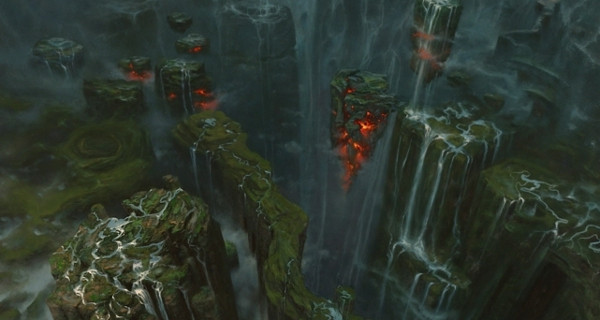The First Age of Cthon (at least, the first one to be recorded), was a world in which Life and Chaos dominated everything, with results that are utterly alien by later mortal standards. The proof of this is that the obscure and inhuman intelligent races of those times, later surviving in the Underdark, Abyss, and the other dark pieces of First Age that went underground, have such distorted morals, logic, and ideas because they are in tune with that world. A world that, fortunately for humans and demi-humans, practically auto-exiled itself, leaving place for a new world on the surface of the earth.
That new world is what later sages refer to as the Second Age World, sometimes also referred to as the "Golden Age".
The World of the Second Age
The incredible disaster that ended the First Age World literally ripped the earth and sky apart.
Immense volcanoes erected themsleves in a single, apocalyptic, and endless night. Lava erupted from them copiously, like blood gushing messily from dire wounds. The wounds which the very earth had been inflicted by the warring Elder Gods. Rain was like entire seas dropped from the sky, and waves were as tall as mountains.
The whole surface of the world was reshaped, even if for some obscure reason, many places survived, encased by the newly formed rocks as if some kind of invisible shield had protected them from the elements. Even like this, those places were now sealed by unthinkable amounts of solid rock, and the surface of the world was virgin, untouched.
During the earth-shaking disaster though, something incredible had happened, which gave to the new virgin world a new generation of powerful beings: the very elements that obliterated the First Age World had become sentient. And it wasn't a mortal kind of sentience: they were true gods.



















